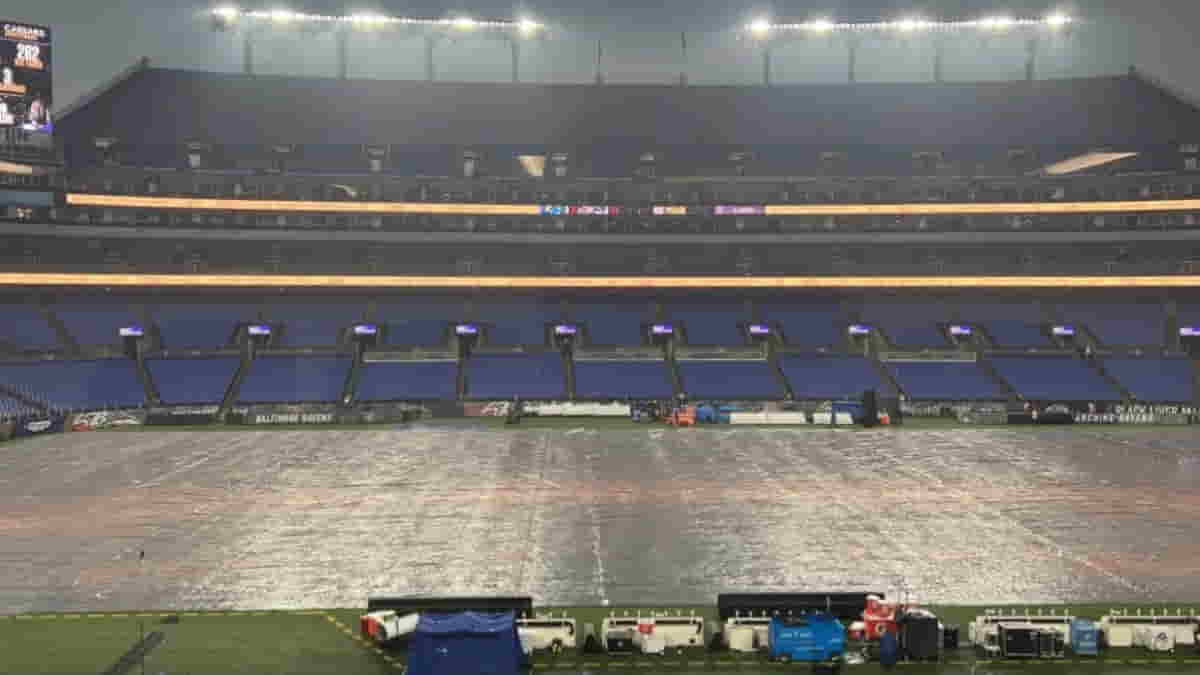The National Football League (NFL) is the most profitable sports league in the world. Being the most profitable league in the world it is natural that the NFL is treated as a billion-dollar industry. Similarly, just like other industries, the NFL is affected by the weather. The effect of weather, the potential effects of our changing atmosphere and how weather technology developments might assist in reducing weather hazards are all covered in the article below.
Impact of weather on NFL
Of the four major American sports, the NFL has always been unique in its lone willingness to brave the weather for all of its games.
The NBA and NHL exclusively play indoors, and MLB will call games or use retractable roofs when the conditions become too harsh. Sure, football has its fair share of domes, but the large majority of NFL venues are entirely open to the will of Mother Nature.
That’s not to knock games played in domes. Having perfectly controlled conditions to play in lends its hands to more high-scoring affairs: games in domes average almost four more points than games played outdoors. With that in mind, here is a look at how different weather conditions affect NFL games.
Rain
One of the harder meteorological conditions to forecast is precipitation. Because it can be difficult to distinguish between the real impact of precipitation on play and the compounding impacts of other weather factors that are frequently present during rain and snow (wind and temperature), the sample sizes are a little difficult to deal with reliably. The distinction between light, moderate and heavy rain is usually insignificant.
It is simple to envisage players slipping around everywhere in a torrential downpour, so this undoubtedly appears intuitively bizarre. But it’s crucial to keep in mind that our goal is to separate precipitation from other factors.
Contrary to popular belief, light snow alone has virtually little impact on passing productivity. Only 2% fewer passes are made in light snow than in games played under optimal conditions. This stands in stark contrast to heavier snow types, where passing productivity often decreases by 25%.
Temperature
Temperature is quite simple to understand. Looking at the temperature range of 55-85 degrees, which is commonly considered “ideal” for this weather condition, usually shows no notable differences in performance. Passing output decreases by 5% between 25 and 55 degrees. There is roughly an 8% drop both below 25 degrees and above 85 degrees.
Wind
With the largest sample size, the wind is the most dependable and predictive weather element. When examining the weather in a state, keep in mind that the average wind speed for an NFL game is approximately seven miles per hour. Passing productivity is more affected by the wind than passing efficiency, but as wind speeds rise, we should anticipate a decline in scoring overall.
One word of caution: as the wind reaches 20 mph or more, it becomes considerably more severe for passing. The drop from 0–10 mph to 10-15 mph is comparable to that from 10-15 mph to 15-20 mph; however, the drop from 15-20 mph to 20+ mph is roughly 1.5–2.0 times greater.
Conclusion
In the complicated dance between sports and the whims of weather, the NFL emerges as a unique spectacle, daringly exposed to the elements. Unlike its indoor-exclusive counterparts, football braves Mother Nature head-on, revealing a fascinating correlation between weather nuances and game dynamics. Rain, snow, temperature, and wind each orchestrate their distinct impact, influencing passing productivity and scoring. While light precipitation or optimal temperatures seem negligible, heavier snow or escalating wind speeds significantly impede performance. As we unravel these weather intricacies, the potential for weather technology to mitigate these game-altering factors becomes a beacon of possibility in the NFL’s meteorologically influenced landscape.






























